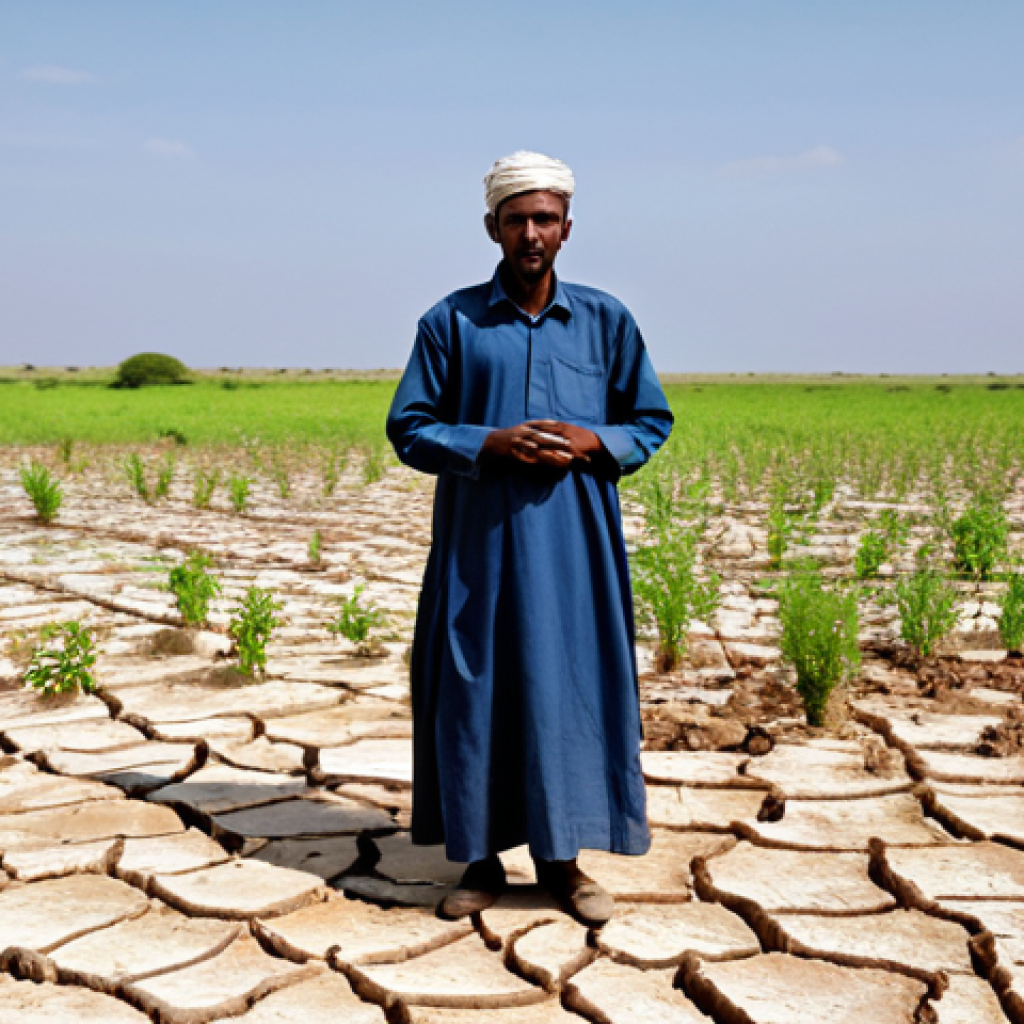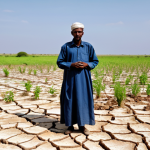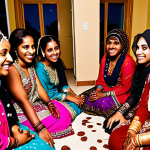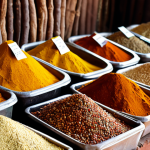It’s easy to scroll past headlines about distant crises, but when you truly stop to consider the sheer scale of human suffering in Somalia, it hits differently.
The ongoing refugee crisis there isn’t just a statistic; it’s a brutal reality shaped by a devastating confluence of factors: relentless droughts, protracted conflict, and the undeniable creep of climate change exacerbating everything.
I’ve often wondered how much more an entire community can endure before it completely breaks. This isn’t just about people fleeing violence; it’s about an entire generation facing an existential threat, scrambling for basic survival amidst unimaginable hardship.
The long-term implications for regional stability and global humanitarian efforts are staggering, signaling a future where mass displacement becomes an even more pressing challenge unless we act decisively.
It’s a complex tapestry of despair, resilience, and an urgent call for sustainable solutions. Let’s delve deeper into this below.
The Unyielding Grip of Climate Catastrophe
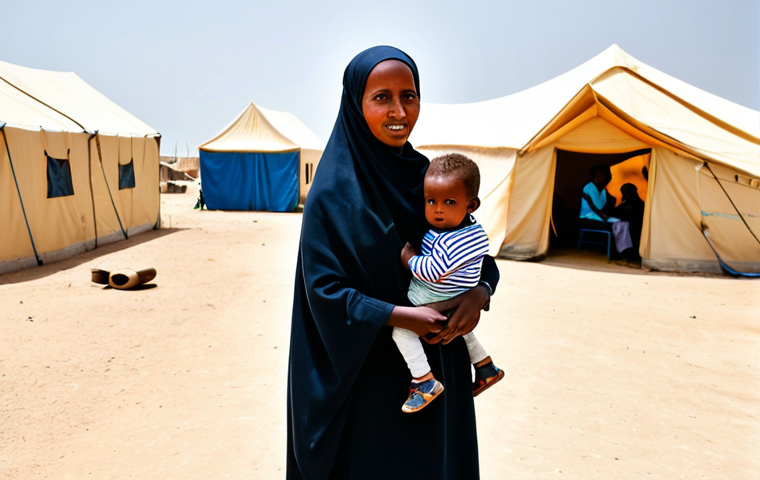
It’s an uncomfortable truth that what we often label as “natural disasters” in Somalia are, in many ways, man-made through the lens of climate change.
I’ve spent countless hours poring over reports and speaking with humanitarian workers, and what consistently emerges is a heartbreaking pattern: erratic rainfall, prolonged droughts, and flash floods that devastate the already fragile land.
My heart aches when I imagine a farmer, whose family has tilled the same soil for generations, watching their entire livelihood turn to dust, or worse, be washed away in a sudden deluge.
This isn’t just about dry fields; it’s about water sources vanishing, livestock perishing en masse, and a fundamental way of life dissolving before their very eyes.
The desperation that sets in, that gut-wrenching feeling of not being able to provide for your children, is what ultimately forces people to leave everything behind and embark on perilous journeys.
It’s a relentless cycle, intensified by a global climate crisis that Somalia, despite its minimal contribution to emissions, is feeling with devastating intensity.
When I reflect on it, the sheer injustice of it all is infuriating.
1. Desiccated Lands and Vanishing Livelihoods
The imagery of a parched landscape, cracked earth, and skeletal livestock isn’t just a grim photograph; it’s the daily reality for millions in Somalia.
For years, the country has endured some of the longest and most severe droughts in recent memory, leaving vast swathes of agricultural land barren and pastoral communities without the pasture or water their animals critically need to survive.
I remember seeing a documentary where a mother wept as her last goat, her family’s sole source of milk and income, succumbed to thirst. That scene has stayed with me.
It’s not merely an economic loss; it’s a profound cultural and social upheaval. Traditional ways of life, passed down through oral histories and practical knowledge, are rendered obsolete, forcing entire clans into an unfamiliar and often undignified existence in overcrowded displacement camps.
The very foundation of their self-sufficiency has eroded, replaced by an acute dependence on external aid, which itself is often insufficient and inconsistently delivered.
This systematic destruction of traditional economies isn’t just about poverty; it’s about stripping people of their dignity and their sense of purpose.
2. The Double-Edged Sword of Flooding
As if prolonged drought wasn’t enough, when the rains do eventually come, they often arrive in violent, unpredictable bursts, leading to devastating flash floods.
It’s a cruel irony, isn’t it? One moment, people are praying for water, and the next, their homes, shelters, and what little possessions they have are swept away.
I’ve seen images of entire villages submerged, their residents scrambling to higher ground, only to find themselves without food, clean water, or shelter.
These floods not only destroy infrastructure but also contaminate what little clean water sources remain, exacerbating the spread of waterborne diseases like cholera, which disproportionately affect children.
The logistical nightmare for humanitarian agencies trying to reach isolated communities becomes immense, turning critical aid deliveries into high-stakes operations.
It’s a stark reminder that climate change isn’t just about rising temperatures; it’s about the complete disruption of predictable weather patterns, turning life into a constant game of chance for those on the front lines.
The emotional toll of this relentless uncertainty is immeasurable, leaving communities perpetually on edge, unable to plan for a stable future.
Conflict’s Endless Echoes: A Cycle of Displacement
While climate change acts as a slow, insidious poison, protracted conflict in Somalia remains a brutal, immediate catalyst for displacement. The constant ebb and flow of violence, often fueled by competing clan interests, extremist groups like Al-Shabaab, and regional power struggles, has created an environment of pervasive fear and instability.
I’ve spoken with individuals who have been displaced not once, not twice, but multiple times within their own country, each time losing a little more of their hope and resilience.
Imagine rebuilding your life, painstakingly gathering what little resources you have, only for the sound of distant gunfire to send you fleeing again.
It’s a trauma that runs deep, scarring generations and eroding the social fabric that might otherwise help communities withstand other shocks. The strategic targeting of civilians, the destruction of essential services like hospitals and schools, and the imposition of harsh, often arbitrary rule by armed groups leave people with no viable option but to seek safety elsewhere, even if that safety is tenuous and temporary.
1. The Scars of Perpetual Insecurity
Living under the constant shadow of insecurity is an experience few of us can truly comprehend. For Somalis, the threat of violence is not an abstract concept but a tangible, daily reality.
Militias, clan clashes, and the enduring presence of extremist groups mean that going about one’s daily life – tending to crops, fetching water, sending children to school – can be fraught with danger.
I heard a story once about a family whose entire village was caught in a crossfire, forcing them to run for their lives with only the clothes on their backs.
The sheer terror of such an experience, the helplessness, leaves an indelible mark. This perpetual state of alert prevents any meaningful recovery or development, trapping communities in a cycle of destitution and displacement.
It also fosters deep mistrust, making it incredibly difficult for aid organizations to operate effectively or for nascent governance structures to take root.
The psychological toll of living in such uncertainty is immense, contributing to widespread mental health crises that often go unaddressed due to lack of resources and social stigma.
2. Targeted Displacement and Humanitarian Blockades
Alarmingly, conflict isn’t always a random byproduct; it can be a deliberate strategy. Armed groups often use displacement as a tactic, either to assert control over territory, punish communities for perceived disloyalty, or to create a power vacuum.
This can involve blockading humanitarian aid, denying access to essential supplies, or directly attacking civilian infrastructure. When I read reports of food convoys being ambushed or medical supplies being deliberately withheld, my blood boils.
It’s a calculated cruelty that weaponizes basic human needs. This not only forces people to flee but also makes their survival incredibly difficult once they reach displacement camps, where resources are already stretched thin.
The deliberate disruption of markets, the imposition of illegal taxes, and the targeting of those who try to provide assistance create an almost impenetrable wall of despair for those caught in the crosshairs.
It’s a tragic testament to the complex and often brutal nature of modern conflict, where human lives become mere pawns in a larger, deadlier game.
The Human Cost: Stories from the Frontlines of Survival
Beyond the grim statistics and political analyses, the Somalia refugee crisis is, at its heart, a crisis of individual human suffering. Every displaced person, every family torn apart, carries a unique and harrowing story of loss, resilience, and an unwavering fight for survival.
I often find myself reflecting on the strength it must take to endure such immense hardship, to keep going when every fiber of your being must be screaming for rest.
These aren’t just numbers; they are mothers holding their malnourished children, fathers desperately seeking work, and children whose innocence has been stolen by the harsh realities of their world.
Their experiences paint a vivid picture of the profound toll that displacement takes, not just physically, but emotionally and psychologically. It’s a reminder that empathy, though sometimes difficult to maintain in the face of overwhelming global crises, is our most crucial compass.
1. The Plight of Women and Children
In any humanitarian crisis, women and children bear a disproportionate burden, and Somalia is no exception. I’ve heard countless heart-wrenching accounts of women walking for days, sometimes weeks, through hostile territories, carrying their infants and guiding their older children, all while facing the constant threat of violence, sexual assault, and starvation.
Girls are often pulled out of school to help care for younger siblings or sent out to search for food or water, effectively ending their chances for an education and a different future.
The camps, while offering some semblance of safety, often present new dangers, with inadequate sanitation, limited access to healthcare, and the pervasive fear of gender-based violence.
Children, especially, are the most vulnerable; I’ve read reports detailing the devastating impacts of malnutrition on their development, leading to stunting and long-term health issues that will affect them for the rest of their lives.
It’s a silent crisis within a crisis, often overlooked by the broader narrative, yet it represents the deepest wounds of displacement.
2. The Erosion of Dignity and Identity
Displacement isn’t just about losing a home; it’s about losing a sense of self, community, and purpose. When people are forced to abandon their land, their traditions, and their livelihoods, they often find themselves stripped of their dignity, reduced to relying on handouts in unfamiliar environments.
I’ve often wondered how it feels to go from being a proud farmer or a respected elder in your village to living in a makeshift tent, dependent on the kindness of strangers.
This erosion of identity is a profound psychological burden, leading to feelings of helplessness, depression, and a loss of hope for the future. The vibrant cultural tapestry of Somalia, rich in oral traditions, pastoral customs, and strong clan ties, is fractured by the realities of camp life, where traditional social structures struggle to adapt.
Rebuilding not just physical structures but also the intricate web of human connections and cultural practices is an immense challenge that requires far more than just food and shelter; it requires a recognition of their inherent worth and potential.
Navigating the Maze of Aid and International Response
The humanitarian response to Somalia’s protracted crisis is a monumental undertaking, fraught with immense challenges. From the perspective of someone who’s followed this situation closely, it’s a constant battle against logistical nightmares, funding shortfalls, and political complexities.
While dedicated aid workers perform heroic acts daily, the sheer scale of need often outstrips the available resources, leaving millions in a perilous state.
The international community, despite its best intentions, sometimes struggles to coordinate efforts effectively or to address the root causes of displacement, leading to a cycle of emergency interventions rather than sustainable solutions.
It makes you wonder how much more effective aid could be if efforts were truly unified and long-term stability was prioritized over short-term relief.
1. Funding Gaps and Aid Delivery Hurdles
One of the most persistent issues facing the humanitarian effort in Somalia is the chronic underfunding of aid appeals. Each year, the UN and various NGOs launch appeals for billions of dollars, only to receive a fraction of what’s needed.
I’ve seen firsthand how these shortfalls translate directly into fewer meals, less medicine, and inadequate shelter for those who need it most. Beyond the money, delivering aid in Somalia is a logistical labyrinth.
Insecurity, poor infrastructure, and the sheer vastness of the affected areas make it incredibly challenging to reach those in remote or conflict-affected regions.
Aid workers often operate at immense personal risk, navigating complex power dynamics and negotiating access with various armed groups. The image of a food truck stuck in mud, unable to reach starving families, is not just a metaphor; it’s a frequent, frustrating reality.
This combination of insufficient funds and operational difficulties means that critical assistance often arrives too late, or not at all, leaving countless lives hanging in the balance.
2. The Politics of Intervention and Long-Term Sustainability
The international response to Somalia is not just about delivering food and water; it’s deeply entwined with complex political considerations. Decades of external intervention, often with mixed results, have shaped the current landscape.
There’s a delicate balance between providing immediate relief and supporting long-term development without inadvertently undermining local governance or exacerbating existing tensions.
I’ve observed how donor fatigue can set in, especially for crises that persist for so long, and how shifting global priorities can divert attention and resources away from Somalia’s enduring needs.
Sustainable solutions require investment in education, healthcare, infrastructure, and peacebuilding initiatives, but these are often seen as less urgent than emergency food aid.
The challenge lies in transitioning from a purely humanitarian response to one that fosters resilience, economic self-sufficiency, and durable peace, a transition that requires sustained political will and significant, long-term financial commitment from the international community.
Beyond the Headlines: Envisioning a Path to Durable Solutions
While the immediate crisis in Somalia demands urgent attention, true progress requires us to look beyond the daily headlines and consider what a sustainable future might look like.
It’s a daunting task, requiring a multi-faceted approach that addresses the interwoven challenges of climate change, conflict, and chronic underdevelopment.
From my perspective, this isn’t just about sending aid; it’s about empowering communities, fostering genuine peace, and building resilience against future shocks.
It demands innovative thinking, localized solutions, and an unwavering commitment from both the Somali people and the international community to move past emergency cycles towards genuine recovery and self-sufficiency.
1. Building Resilience in the Face of Climate Change
For Somalia to break free from the cycle of climate-induced displacement, the focus must shift dramatically towards resilience-building and adaptation.
This means investing in climate-smart agriculture, developing drought-resistant crops, and implementing sustainable water management systems like rainwater harvesting and community-managed boreholes.
I’ve heard promising reports of pilot projects where local communities are actively engaged in rehabilitating degraded land and planting trees, acts that not only combat desertification but also provide economic opportunities.
It also involves early warning systems for weather patterns and robust disaster preparedness plans at the community level. My belief is that empowering local communities with the knowledge and resources to adapt to their changing environment is far more effective than simply providing relief after every disaster.
It’s about giving them the tools to reclaim their agency and build a future where they are less vulnerable to the unpredictable whims of nature.
2. The Imperative of Peacebuilding and Governance
Ultimately, lasting solutions to displacement in Somalia hinge on achieving genuine and sustainable peace, alongside the establishment of effective, legitimate governance structures.
This isn’t just about signing peace treaties; it’s about fostering reconciliation at the grassroots level, addressing the grievances that fuel conflict, and ensuring that justice and accountability are upheld.
I truly believe that investing in local peace initiatives, supporting traditional conflict resolution mechanisms, and creating opportunities for inclusive political participation are critical steps.
A stable government that can provide basic services, protect its citizens, and manage resources equitably would be a game-changer. It would allow displaced people to return home safely, rebuild their lives, and contribute to their country’s development.
Without a foundational peace and a functioning state, all other efforts – humanitarian aid, climate adaptation, economic development – will remain fragile and temporary.
| Key Drivers of Displacement | Immediate Impacts on Individuals | Long-Term Societal Consequences |
|---|---|---|
| Climate Extremes (Droughts, Floods) | Food and water insecurity, loss of livestock/crops, forced migration. | Erosion of livelihoods, environmental degradation, increased competition for resources. |
| Protracted Conflict & Insecurity | Physical injury, psychological trauma, loss of property, arbitrary detention. | Breakdown of social structures, increased radicalization, persistent instability. |
| Economic Hardship & Poverty | Malnutrition, lack of healthcare, educational disruption, limited opportunities. | Increased dependency on aid, brain drain, delayed national development. |
| Lack of Basic Services | Spread of preventable diseases, high mortality rates (especially children), illiteracy. | Strained public health systems, weakened human capital, perpetuation of poverty. |
The Silent Crisis: Impacts on Women, Children, and Vulnerable Populations
While the overall picture of displacement in Somalia is grim, it’s crucial to shine a spotlight on the unique and often overlooked struggles faced by its most vulnerable populations: women, children, and persons with disabilities.
From my vantage point, having absorbed countless testimonials and reports, I’ve come to understand that the crisis doesn’t affect everyone equally. It preys on pre-existing vulnerabilities, pushing those already on the margins into even more desperate circumstances.
Their narratives, often overshadowed by broader statistics, are the ones that truly underscore the profound human tragedy unfolding, demanding a more nuanced and targeted approach from the global community.
1. Protecting the Unprotected: The Scars of Childhood Displacement
When I think about the children of Somalia, my heart simply aches. They are the true silent victims, their formative years marred by insecurity, hunger, and displacement.
Many have never known a stable home, their earliest memories filled with the sounds of conflict or the gnawing pangs of hunger. Beyond the immediate physical threats, the long-term impacts are devastating.
Children are deprived of education, their futures stolen by circumstances beyond their control. They are highly susceptible to malnutrition, which can lead to permanent physical and cognitive impairments.
Moreover, they are at increased risk of exploitation, child labor, and forced recruitment by armed groups. I recall reading about a young boy, no older than ten, who had been displaced three times and simply wanted a safe place to read a book.
This profound longing for normalcy is a stark reminder of the innocence lost and the critical need to protect and nurture this generation. It’s not just about survival; it’s about ensuring they have the chance to thrive.
2. Women at the Epicenter: Resilience Amidst Overwhelming Odds
Somali women are, unequivocally, the backbone of their families and communities, yet they face an unimaginable gauntlet of challenges during displacement.
They often bear the primary responsibility for fetching water, seeking food, and caring for children and the elderly, all while navigating treacherous environments.
The journey to safety itself is fraught with peril, including the constant threat of gender-based violence, a deeply disturbing reality that is often underreported due to stigma and fear.
In displacement camps, women continue to be disproportionately affected by inadequate sanitation, lack of privacy, and limited access to healthcare, particularly maternal care.
Despite these overwhelming odds, their resilience is truly astounding. I’ve learned about women organizing community-based support networks, setting up small businesses with meager resources, and advocating fiercely for their children’s futures.
Their strength is a testament to the human spirit, but it also highlights the urgent need for targeted interventions that prioritize their safety, health, and economic empowerment, moving beyond simply seeing them as victims.
The Global Ripple Effect: Why Somalia Matters to Us All
It might feel easy to view the Somalia crisis as a distant problem, far removed from our daily lives. However, from my perspective, such a viewpoint dangerously underestimates the interconnectedness of our world.
The prolonged instability and humanitarian catastrophe in Somalia have tangible ripple effects that extend far beyond its borders, impacting regional security, migration patterns, and even global economic stability.
Dismissing it as “their problem” is not only morally short-sighted but also pragmatically unwise. What happens in Somalia, just like any other part of our shared planet, ultimately affects us all, making a concerted, compassionate, and strategic global response not just a moral imperative, but a matter of collective self-interest.
1. Regional Destabilization and Security Threats
The instability in Somalia doesn’t remain confined within its geographical boundaries; it spills over, creating significant regional security threats.
The presence of extremist groups like Al-Shabaab, fueled by a fertile ground of desperation and lack of opportunity, poses a continuous threat to neighboring countries in the Horn of Africa.
I’ve read analyses that directly link the flow of displaced people and lack of governance to increased cross-border criminal activities, including human trafficking and illicit trade.
When millions are displaced, and large swathes of territory are ungoverned or controlled by non-state actors, it creates safe havens and breeding grounds for extremist ideologies that can then spread globally.
This directly impacts international counter-terrorism efforts and puts regional stability at risk, potentially leading to broader conflicts that draw in more international actors.
It’s a complex web where local despair can quickly escalate into a transnational security concern.
2. The Evolving Face of Global Migration
The mass displacement within Somalia and the subsequent outflow of refugees also play a significant role in shaping global migration patterns, challenging existing humanitarian frameworks and putting pressure on host countries.
Thousands of Somalis have embarked on perilous journeys across the Mediterranean, seeking refuge in Europe, or have sought asylum in neighboring countries like Kenya and Ethiopia, which are already struggling with their own economic and environmental challenges.
I’ve often thought about the immense courage and desperation it takes to leave everything behind and risk your life in search of safety. This influx of migrants and refugees strains resources in host nations, sometimes leading to social tensions and economic burdens.
It also highlights the urgent need for more equitable burden-sharing among nations and the development of comprehensive, humane policies for managing large-scale population movements.
The Somali crisis is a poignant example of how localized humanitarian disasters can become significant drivers of global demographic shifts, underscoring the urgent need for proactive rather than reactive international responses.
Closing Thoughts
As I reflect on the myriad challenges Somalia faces – the relentless grip of climate change, the enduring scars of conflict, and the profound human suffering that accompanies displacement – one truth becomes strikingly clear: this isn’t a problem that can be compartmentalized or ignored.
It’s a complex tapestry of interconnected crises, demanding a compassionate, holistic, and sustained global response. Our shared humanity compels us to look beyond the headlines, to truly see the individuals behind the statistics, and to commit to building a future where stability and dignity are not just fleeting hopes, but achievable realities for every Somali.
Useful Information
1. Support Reputable Humanitarian Organizations: Organizations like UNICEF, UNHCR, Doctors Without Borders (MSF), and the International Rescue Committee (IRC) are on the ground providing critical aid. Your financial contributions can make an immediate difference in delivering food, water, medical care, and shelter.
2. Educate Yourself and Others: Stay informed about the ongoing situation through reliable news sources, UN reports, and NGO publications. Sharing accurate information helps raise awareness and keeps the crisis on the global agenda.
3. Advocate for Policy Change: Contact your elected officials and urge them to prioritize foreign aid, support long-term development initiatives, and advocate for diplomatic solutions to conflict in Somalia and the wider Horn of Africa region.
4. Consider Supporting Local Initiatives: Look for organizations that work directly with Somali communities on resilience-building projects, such as climate-smart agriculture, water management, and peacebuilding at the grassroots level.
5. Recognize the Interconnectedness: Understand that global issues like climate change and regional conflicts have far-reaching impacts, driving migration and affecting global stability. Our collective action, no matter how small, contributes to a more secure and equitable world.
Key Takeaways
The Somalia refugee crisis is a complex humanitarian catastrophe driven by the intertwined forces of climate change, protracted conflict, and chronic underdevelopment.
It disproportionately affects women and children, eroding their dignity and basic rights. Addressing this requires a multi-faceted approach, encompassing immediate humanitarian aid, long-term resilience building, and sustainable peace and governance initiatives.
Ultimately, the stability of Somalia has significant global ripple effects, making a concerted international response not just a moral imperative, but a shared responsibility for a more secure world.
Frequently Asked Questions (FAQ) 📖
Q: What exactly are the primary forces driving the humanitarian catastrophe we’re seeing unfold in Somalia?
A: From my perspective, having watched these situations tragically spiral for years, it’s not just one thing; it’s this incredibly brutal and complex cocktail of factors that just keep piling on.
You’ve got the relentless, crushing droughts that literally dry up lives, wiping out crops and livestock, leaving vast swathes of land barren. Then, there’s the protracted, soul-destroying conflict – it’s like a constant tremor beneath everything, forcing people to flee their homes, often repeatedly, shattering any semblance of stability or community.
And let’s be absolutely clear: the insidious creep of climate change isn’t just an abstract concept here; it’s the undeniable, accelerating force making those droughts more frequent and intense, basically turning a bad situation into an absolute nightmare.
It’s like these three elements are locked in a devastating dance, each one exacerbating the others, leaving an entire population with nowhere left to turn.
Q: Beyond the immediate suffering, what are the most significant long-term implications of this ongoing crisis, especially for regional and global stability?
A: When you really stop and look beyond the immediate hunger and displacement – which is horrific enough, believe me – the long-term implications are staggering, truly mind-boggling.
We’re talking about an entire generation being scarred, perhaps irreversibly, by trauma and a lack of basic education or opportunity. This isn’t just about people moving from one camp to another; it’s about the very fabric of society fraying, leading to mass displacement becoming an even more pressing global challenge.
I’ve often worried about how this destabilizes an already fragile region, potentially creating new breeding grounds for unrest and extremism, which then, inevitably, spills over borders.
On a global scale, it signals a future where humanitarian crises become the norm, straining resources and goodwill worldwide. It’s a stark reminder that if we don’t address these root causes sustainably, we’re simply postponing, and likely magnifying, far greater problems down the line.
Q: Given the immense complexity, what types of sustainable solutions are most urgently needed to address the crisis in Somalia, and why is “decisive action” so crucial now?
A: Honestly, there’s no quick fix here, and anyone who tells you otherwise probably hasn’t truly grappled with the depth of the challenge. What’s critically needed isn’t just emergency aid, though that’s vital for immediate survival, but truly sustainable solutions.
This means investing deeply in climate resilience – things like drought-resistant agriculture, water management systems, and early warning systems that actually work on the ground.
It also absolutely demands a renewed, persistent commitment to conflict resolution and peace-building initiatives that are genuinely inclusive, not just top-down directives.
And crucially, it requires robust, long-term development aid focused on education, healthcare, and economic opportunities to rebuild shattered lives and communities.
“Decisive action” isn’t just a buzzword; it means moving beyond reactive measures to proactive strategies, pooling international resources, and holding leaders accountable.
It means understanding that the cost of inaction, of just letting this crisis fester, will far outweigh any investment we make now. We have to act with purpose and genuine commitment, because the alternative is simply too grim to contemplate.
📚 References
Wikipedia Encyclopedia
구글 검색 결과
구글 검색 결과
구글 검색 결과
구글 검색 결과
구글 검색 결과
